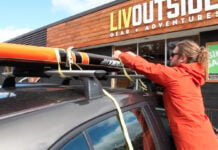The thought of tossing a 16-foot canoe over your head and down onto the base of your neck can be intimidating—until you’ve been schooled in the finer technical points of the one-person canoe lift. As impressive as it looks, the weight of the canoe is easily managed by most canoeists. The secret is to position yourself properly, let your legs do the heavy lifting and be sure to keep good time when you rock and roll the canoe onto your shoulders.
Solo Canoe Lift Technique
1 Grasp the near gunwale
Find an area with no obstructions, stand at the center of the canoe and grasp the closest gunwale with your hands about shoulder-width apart.
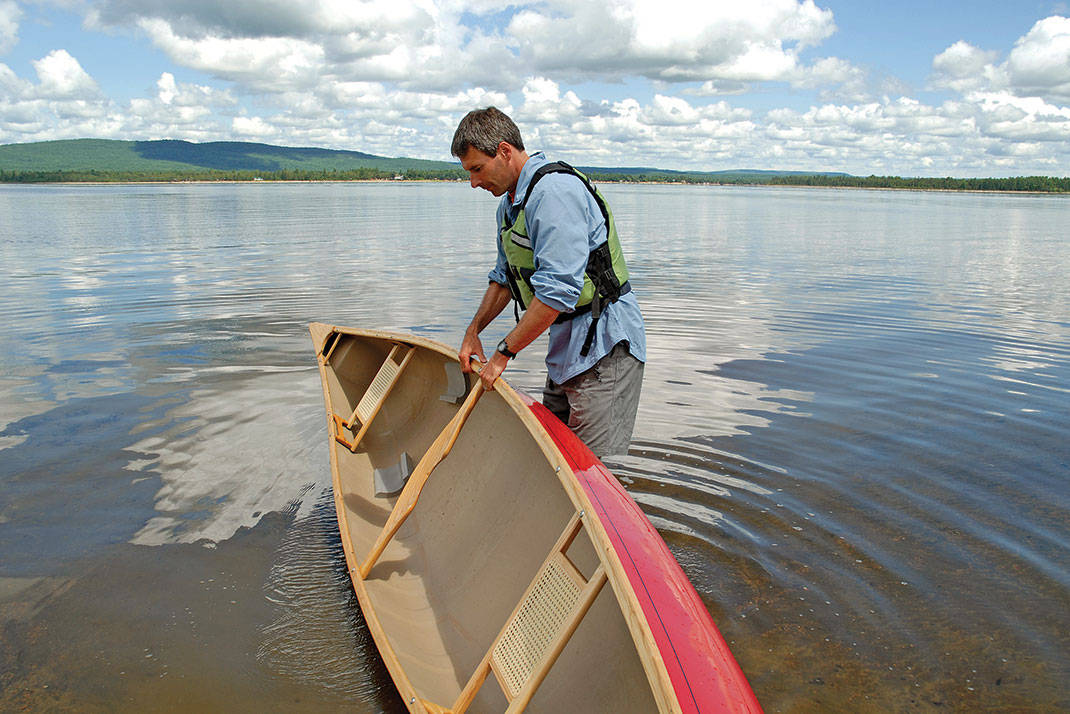
2 Slide the canoe up your legs
Bend your knees and slide the canoe up your legs so it is resting on your thighs.
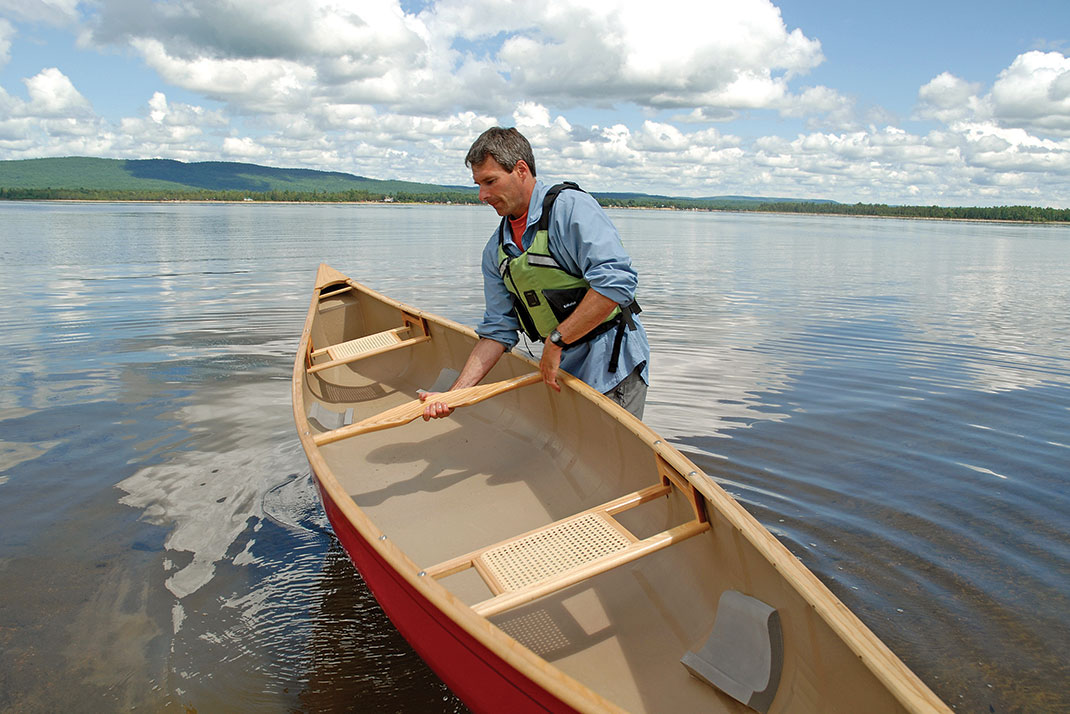
3 Rock the boat, grab the far gunwale
Begin a gentle rocking motion to build momentum and establish your timing. When ready, use the leg closest to the bow to heave the canoe up so you can grab the far gunwale with your hand closest to the bow. You are now holding the canoe with your bow-side hand on the far gunwale and the stern-side hand on the near gunwale. The canoe’s weight is supported by your bow-side leg.
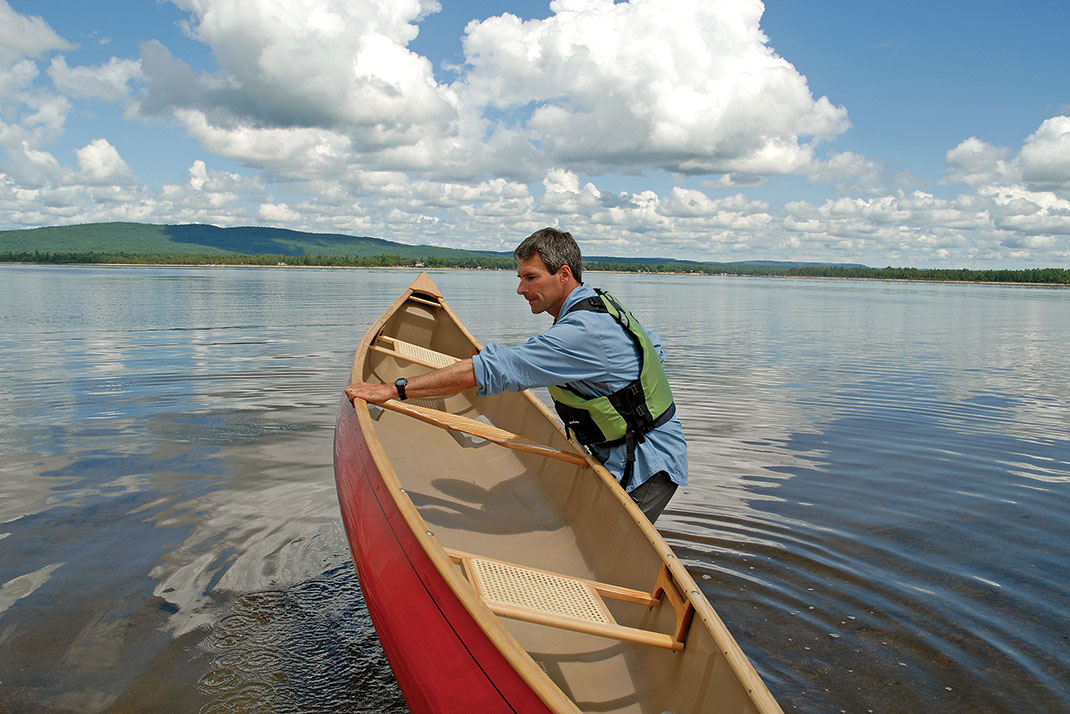
4 Use your leg to lift the canoe
Initiate another rocking motion using the strong muscles of your bow-side leg. Pick your moment and with a lift from your leg flip the canoe above your head so it follows an arc guided by your bow-side arm.
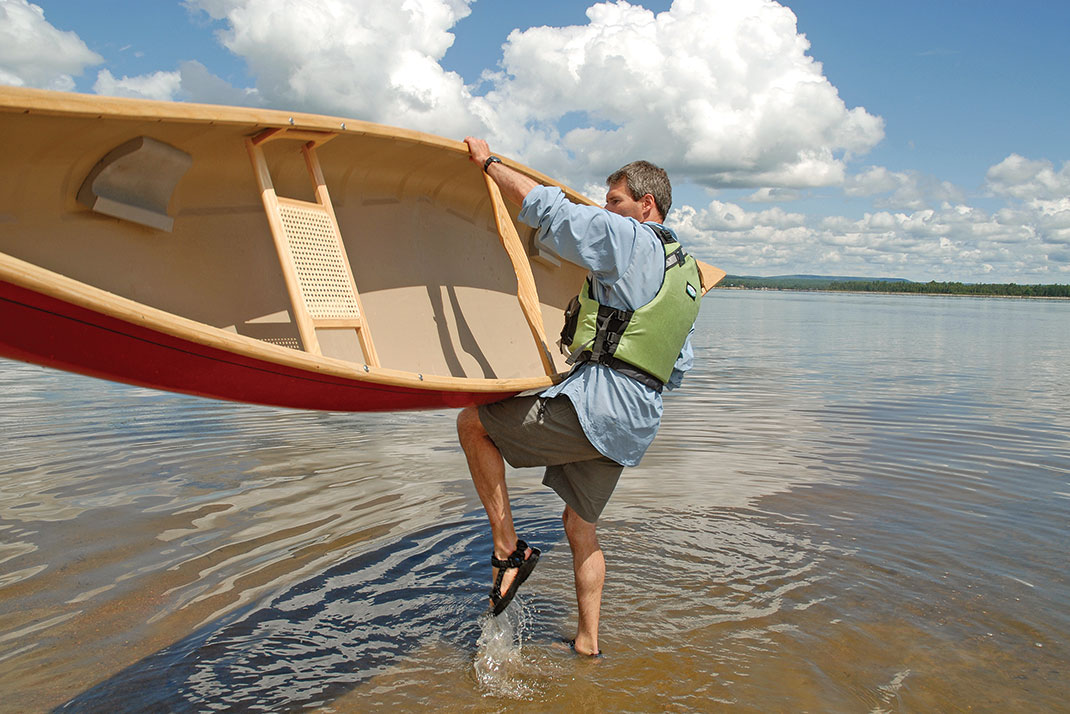
5 Settle the yoke on your shoulders
Duck your head forward slightly as the gunwale and yoke finish the roll. Settle the yoke down on your shoulders.
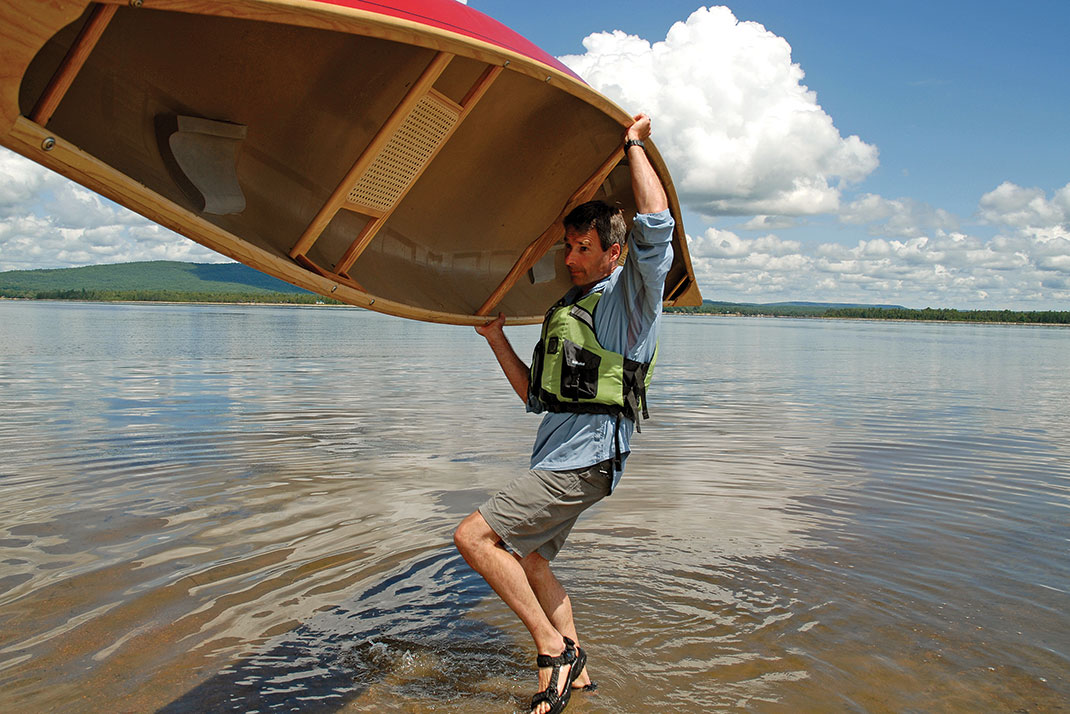
6 Align your body to the boat
As you are swinging the canoe over your head you should be rotating your stance so you finish with your body facing the bow.
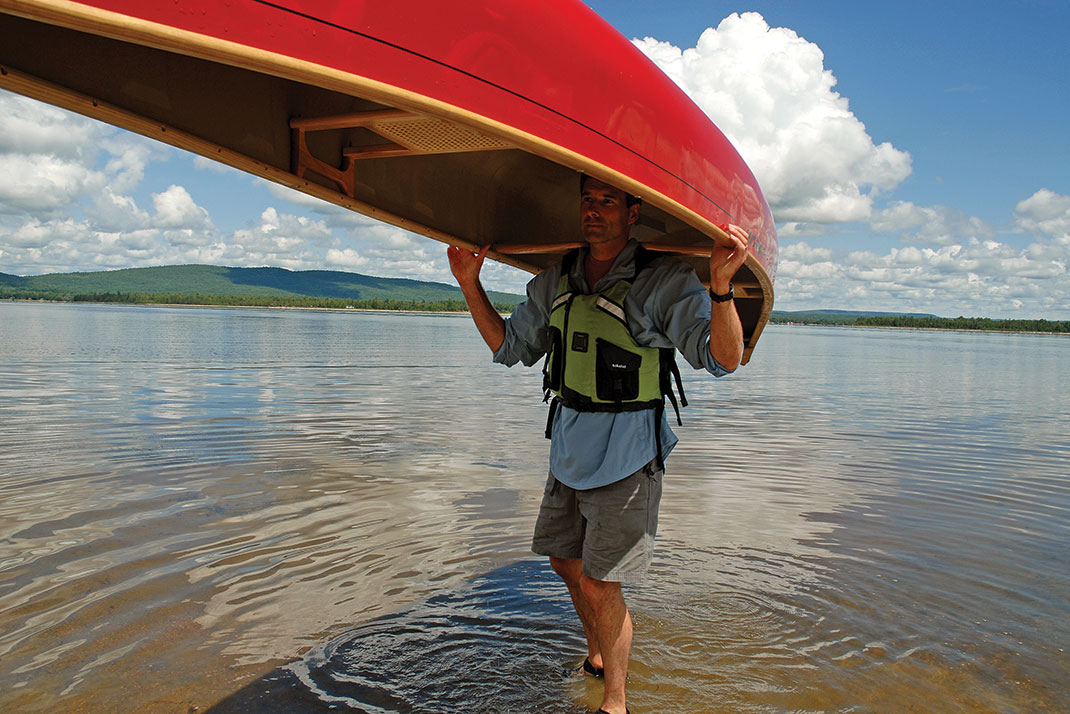
With a quick hop to help lift the canoe off your head you can reverse these steps to unload the canoe. And though you will be tempted to let other paddlers continue in the belief that this is a strenuous maneuver, pass on the tip of using the bow-side leg to propel the canoe upward and you’ll find you soon have other people offering to share the portaging load.







